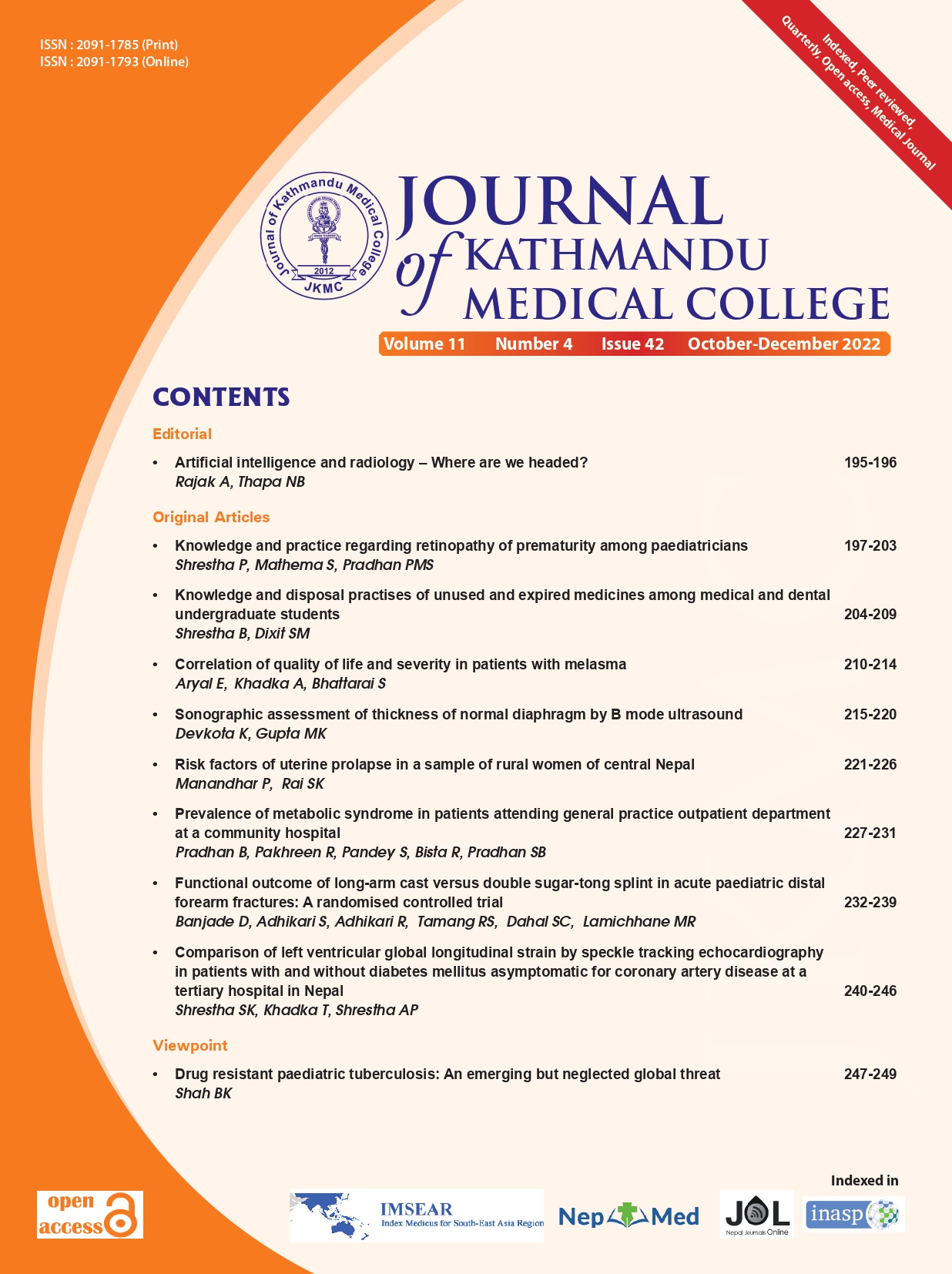Knowledge and practice regarding retinopathy of prematurity among paediatricians
DOI:
https://doi.org/10.3126/jkmc.v11i4.53546Keywords:
Knowledge, Ophthalmologist , Paediatricians, Retinopathy of prematurityAbstract
Background: Retinopathy of prematurity, a vision threatening disease of the preterm occurs due to abnormal retinal vasculature development. Early detection and timely management, prevents blindness. Paediatricians, the primary care providers, require good knowledge of risk factors, time for screening, and referral to an ophthalmologist for their management.
Objectives: To study knowledge and referral practices for retinopathy of prematurity followed by registered paediatricians in Nepal.
Methods: This study was a questionnaire-based descriptive cross-sectional study among 81 paediatricians of Nepal from October 2021 to December 2021. A self-administered questionnaire was sent to all registered paediatricians in Nepal via Google Forms. The paediatricians who did not respond were excluded from the study. Descriptive statistics, frequency tables, and percentages were calculated using SPSS. Ethical clearance was obtained from Institutional Review Committee of Kathmandu Medical College.
Results: Eighty-one paediatricians participated in the study. All of them were aware of retinopathy of prematurity. Eighty (98.8%) were aware that low gestational age was an important risk factor. Only 23 (28.4%) of the paediatricians stated that the first screening should be done within 30 days of life. Eighty (98.8%) paediatricians responded that retinopathy of prematurity is treatable. Lack of well-equipped transportation system for sick babies to eye centres was the major barrier reported.
Conclusion: Awareness regarding risk factors, screening, and referral protocols for retinopathy of prematurity among paediatricians is needed. Multidisciplinary team, formulation and implementation of guidelines to prevent blindness secondary to retinopathy of prematurity is important.
Downloads
Downloads
Published
How to Cite
Issue
Section
License
Copyright (c) 2022 Journal of Kathmandu Medical College

This work is licensed under a Creative Commons Attribution-NonCommercial 4.0 International License.
Copyright © Journal of Kathmandu Medical College
The ideas and opinions expressed by authors or articles summarized, quoted, or published in full text in this journal represent only the opinions of the authors and do not necessarily reflect the official policy of Journal of Kathmandu Medical College or the institute with which the author(s) is/are affiliated, unless so specified.
Authors convey all copyright ownership, including any and all rights incidental thereto, exclusively to JKMC, in the event that such work is published by JKMC. JKMC shall own the work, including 1) copyright; 2) the right to grant permission to republish the article in whole or in part, with or without fee; 3) the right to produce preprints or reprints and translate into languages other than English for sale or free distribution; and 4) the right to republish the work in a collection of articles in any other mechanical or electronic format.




